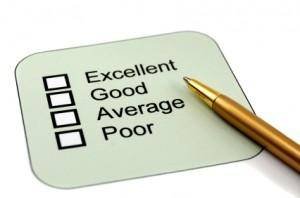Picture this: a bustling sales floor filled with eager Sales Development Representatives (SDRs) dialing through their lists, crafting compelling email pitches, and engaging prospects in meaningful conversations.
Each interaction is a step closer to bringing potential customers into the fold, yet amidst the excitement, how do we truly gauge the success of these talented individuals?
Measuring the performance of SDRs is more than just crunching numbers—it’s about understanding the art of sales, the science of strategy, and the heart of communication.
In this guide, we’ll demystify the metrics and methods to evaluate SDR performance, empowering you to recognize the stars of your team and uncover the hidden gems.
So, grab a cup of coffee, sit back, and let’s explore how to turn insights into action for a thriving sales environment!
Table of Contents
ToggleThe Importance of Clear Metrics: A Beginner’s Guide
When it comes to evaluating the performance of Sales Development Representatives (SDRs), clear metrics are essential. These metrics serve as the backbone of your analysis, providing you with the data needed to make informed decisions.
Without them, assessing whether your SDRs are meeting their goals becomes a guessing game rather than a data-driven process.
A robust metric system can focus on various aspects of an SDR’s job. Here are some effective metrics:
- Number of Qualified Leads Generated: This measures how many leads have been qualified by the SDRs and passed on to the sales team.
- Conversion Rate: The percentage of cold calls or emails that result in qualified prospects.
- Response Time: How quickly SDRs respond to inbound leads or inquiries.
- Follow-Up Rate: The rate at which SDRs follow up on initial contacts to generate further engagement.
One effective way to track these metrics is through a simple table, tailored to fit your specific needs. Here’s an example of how you might summarize SDR performance metrics:
| Metric | Description | Target | Actual |
|---|---|---|---|
| Qualified Leads | Number of leads passed to sales | 50 | 45 |
| Conversion Rate | Cold call/email success rate | 15% | 18% |
| Response Time | Average response time to leads | 1 hour | 1.5 hours |
| Follow-Up Rate | Percentage of follow-ups | 70% | 65% |
By consistently tracking these metrics, managers can gain valuable insights into the strengths and areas for improvement in their SDR teams.
Clear metrics not only help in evaluating past performance but also in setting realistic targets for future growth, ensuring that your SDRs stay motivated and aligned with the company’s objectives.
Delving into Key Performance Indicators (KPIs) for SDRs
These metrics provide valuable insights into an SDR’s efficiency, effectiveness, and overall contribution to revenue growth. To ensure you’re measuring what matters most, focusing on specific KPIs can paint a clearer picture of an SDR’s performance.
Several KPIs are fundamental when evaluating SDRs:
- Number of Qualified Leads Generated: This measures how many high-quality leads an SDR is able to funnel into the sales pipeline, serving as a direct indicator of their lead generation capabilities.
- Conversion Rate: The ratio of contacts to qualified leads, providing insight into the effectiveness of an SDR’s outreach strategies.
- Calls and Emails Activity: The total outbound calls and emails, highlighting the SDR’s activity level and outreach efforts.
- Meeting Set Rate: Tracks the percentage of scheduled meetings from initial contacts, reflecting how well an SDR can nurture leads to the next stage in the sales process.
- Pipeline Value: The total potential revenue from leads generated, showcasing the financial impact of an SDR’s efforts.
| KPI | Description |
|---|---|
| Number of Qualified Leads Generated | Evaluates the volume of high-potential leads. |
| Conversion Rate | Measures the success rate of converting contacts to leads. |
| Calls and Emails Activity | Represents outreach workload and efforts. |
| Meeting Set Rate | Percentage of meetings scheduled from initial contacts. |
| Pipeline Value | Total potential revenue from SDR’s leads. |
Monitoring these KPIs consistently allows managers to identify areas for improvement and implement supportive training where needed. It also helps align SDR goals with broader business objectives.
By focusing on these key metrics, you can ensure that the efforts of your SDR team are driving sustainable business growth and maintaining a competitive edge in the market.
Crafting Effective Activity Benchmarks for Daily Success
Establishing clear benchmarks is pivotal in assessing the performance of Sales Development Representatives (SDRs). To construct these benchmarks effectively, focus initially on key daily activities that contribute to their overall success.
Start by identifying the most vital tasks, such as lead generation, follow-ups, and initial contact activities.
To guide SDRs towards achieving daily goals, consider utilizing these primary benchmarks:
- Number of Calls: Set a target for the number of calls an SDR should make each day. This can help maintain momentum and ensure consistent outreach.
- Quality Conversations: It’s not just about quantity. Establish a benchmark for meaningful conversations that have the potential to convert to leads.
- Email Outreach: Determine a daily goal for the number of personalized email campaigns sent, focusing on relevance and engagement.
Monitoring these daily activities can give insights into productivity trends and help identify areas needing improvement. Use simple tables to track and evaluate these benchmarks, making the data transparent and actionable:
| Activity | Daily Target |
|---|---|
| Number of Calls | 50 |
| Quality Conversations | 15 |
| Email Outreach | 30 |
This structured approach ensures that SDRs have clear, achievable targets and helps managers quickly spot when additional coaching or resources are needed.
By setting these activity benchmarks, you create a framework for daily success, driving performance and motivation within your sales team.

Evaluating Quality Over Quantity: Advanced Techniques
When focusing on SDR performance, understanding the value of quality over quantity can be a game-changer.
It’s crucial to move beyond simply counting the number of calls or emails sent and instead assess the effectiveness of those interactions.
This transition requires not just experience but also sophisticated techniques that delve deep into the heart of sales activities.
Key Metrics to Track:
- Conversion Rate: Measure how many interactions (calls, emails) result in meaningful conversations or meetings.
- Average Deal Size: Understand the average revenue generated per closed deal, indicating the quality of leads targeted.
- Lead Response Time: Track how quickly SDRs respond to incoming leads, impacting initial engagement quality.
- Customer Satisfaction: Gather feedback from prospects and customers to evaluate the SDR’s relationship-building skills.
Advanced techniques like data enrichment and behavioral scoring can substantially elevate the insight you gather.
Data enrichment involves augmenting basic lead information with additional data points from external sources, offering a fuller picture of a lead’s potential.
Meanwhile, behavioral scoring helps prioritize interactions based on actions taken by the prospect, aligning efforts with genuinely interested parties.
| Technique | Advantage |
|---|---|
| Data Enrichment | Provides a 360-degree view of leads, enabling better targeting |
| Behavioral Scoring | Prioritizes high-potential leads based on behavior analysis |
Incorporate feedback loops into your strategy to continuously improve.
Create a system where SDRs can review their performance metrics regularly, reflecting on what works and what doesn’t. This will foster a culture of continuous improvement and help identify new opportunities for training and development.
The Role of Technology in Tracking SDR Efficiency
In the modern landscape of Sales Development Representative (SDR) performance, technology plays a pivotal role in effectively tracking and boosting efficiency.
Tools such as Customer Relationship Management (CRM) systems, data analytics platforms, and AI-driven applications have transformed how SDRs monitor their performance and optimize their activities.
Key technologies used in tracking SDR efficiency include:
- CRM Systems: Platforms like Salesforce and HubSpot offer comprehensive tracking of sales activities, lead progress, and follow-up schedules.
- Data Analytics Tools: Tools such as Tableau and Google Analytics provide deep insights into performance metrics, enabling the identification of trends and areas for improvement.
- AI and Automation: AI-driven tools can offer predictive analyses, suggesting the best times to contact leads and automating repetitive tasks to allow SDRs to focus on strategic activities.
The integration of these technologies helps SDRs not only understand their performance but also identify areas that require attention.
With detailed analytics at their disposal, they can gauge the effectiveness of their outreach strategies, measure the time spent on different tasks, and fine-tune their approach to maximize lead conversion.
Embracing these technologies enables SDRs to operate more efficiently, turning data into actionable insights that lead to better sales outcomes.
By leveraging advanced tools, SDRs can transform their performance, ensuring every lead is nurtured effectively and no opportunity is missed.
Real-Time Feedback and Coaching: Boosting Performance
The key is to establish a system where constructive feedback is delivered promptly, enabling SDRs to learn and adapt on the fly.
This approach not only facilitates continuous improvement but also provides SDRs with the tools they need to thrive in a dynamic sales environment.
- Utilize call recording software to monitor and assess SDRs’ interactions with potential clients. This allows managers to pinpoint strengths and areas needing improvement in real-time.
- Implement a robust CRM system to track key performance metrics such as call volume, success rates, and follow-up activities.
- Schedule regular coaching sessions to discuss SDRs’ performance, celebrating wins and addressing challenges with actionable feedback.
When giving real-time feedback, it’s essential to be specific and actionable. Vague comments like “good job” or “needs improvement” are less effective.
Instead, guide SDRs with detailed observations and clear steps for improvement.
For example, you might say, “Your introduction was strong, but try to ask more open-ended questions to uncover the client’s pain points.”
| Feedback Area | Actionable Tip |
|---|---|
| Call Opening | Make sure to introduce yourself clearly and mention the prospect’s name to personalize the call. |
| Questioning Techniques | Focus on using open-ended questions to encourage a dialogue rather than yes/no answers. |
| Closing the Call | Always confirm the next steps and express genuine appreciation for the prospect’s time. |
Moreover, incorporating technology tools, such as real-time live chat support and AI-driven analytics, can provide immediate insights and personalized coaching suggestions for each team member.
These tools can help identify patterns and trends that may not be visible through traditional methods, creating opportunities for continuous support and improvement.
Harnessing Data Analytics to Drive SDR Improvements
To optimize the performance of Sales Development Representatives (SDRs), leveraging data analytics is not just beneficial—it’s essential.
By analyzing raw data, organizations can gain a deeper understanding of key performance indicators, leading to targeted and strategic improvements.
Implementing data analytics can help you:
- Identify High-Performing Strategies: By examining metrics such as conversion rates, call-to-connect ratios, and lead response times, you can isolate successful tactics and replicate them across your team.
- Measure Efficiency and Effectiveness: Assessing data on the time spent on various tasks versus the outcomes achieved allows you to streamline processes and focus on high-impact activities.
- Custom Tailor Training: Analytics can reveal specific areas where individual SDRs may need additional support or training, allowing for personalized improvement plans that drive overall team success.
For example, consider the following simple yet effective table to visualize some of the primary metrics you might track:
| Metric | Description | Improvement Action |
|---|---|---|
| Conversion Rate | Percentage of leads that convert to opportunities | Analyze call scripts, adjust messaging |
| Lead Response Time | Average time taken to respond to new leads | Implement automated response systems |
| Call-to-Connect Ratio | Number of successful connections per call attempts | Refine calling strategies and schedules |
By focusing on these key performance metrics, you can create a data-driven culture that continuously seeks to improve and refine your SDR team’s strategies.
Deploying advanced tools and platforms for data collection and visualization, as suggested by Google’s Data Analytics Certification [[2]], makes the process seamless and highly effective.
Creating a Balanced Scorecard for Comprehensive Assessment
Utilizing this multidimensional approach ensures a holistic evaluation of an SDR’s impact.
Financial Perspective
The financial perspective focuses on metrics that directly affect the bottom line. Consider the following KPIs:
- Revenue Generated: Total revenue attributed to leads converted by the SDR.
- Cost per Lead: Average cost involved in acquiring a single prospect.
- ROI on SDR Activities: Return on investment for all SDR-related tasks.
Customer Perspective
Evaluating customer-related metrics helps understand the SDR’s effectiveness from the clients’ viewpoint:
- Customer Satisfaction Score (CSAT): Score derived from client feedback about SDR interactions.
- Net Promoter Score (NPS): Measurement of the likelihood that clients would recommend the company based on their interactions with the SDR.
- Customer Retention Rate: Percentage of customers engaged by the SDR who remain loyal over time.
Internal Processes Perspective
This perspective looks at the efficiency and quality of internal operations connected with the SDR’s role:
- Lead Qualification Rate: Proportion of leads that are properly qualified by the SDR.
- Conversion Rate: Percentage of qualified leads turning into actual sales.
- Average Response Time: Time taken by the SDR to respond to new inquiries.
Learning & Growth Perspective
the learning and growth perspective gauges the SDR’s development and potential for future contributions:
- Training Hours: Total hours spent on professional development and training.
- Skill Improvement Index: Measurement of improvements in key competencies.
- Goal Achievement Rate: Degree to which the SDR meets pre-set personal and professional goals.
| Perspective | Key Metrics |
|---|---|
| Financial | Revenue Generated, Cost per Lead, ROI on SDR Activities |
| Customer | CSAT, NPS, Customer Retention Rate |
| Internal Processes | Lead Qualification Rate, Conversion Rate, Average Response Time |
| Learning & Growth | Training Hours, Skill Improvement Index, Goal Achievement Rate |
Learning from Top Performers: Best Practices to Implement
Getting insights from top performers can significantly elevate your SDR strategies.
High-performing SDRs often share common practices that can be replicated and even customized to fit your team’s unique dynamics.
Here are some best practices gathered from industry leaders that can help turbocharge your sales efforts.
1. Consistent and Personalized Outreach: Top SDRs know the importance of personalized communication. Rather than sending generic emails, they craft messages that address the specific pain points of their prospects. Here are key strategies:
- Use the prospect’s first name and company name in emails.
- Refer to recent news related to the prospect or their company.
- Include a relevant case study or testimonial from a similar industry.
2. Leveraging Data and Analytics: High performers relentlessly track and analyze their outreach metrics. By leveraging data, they can optimize their strategies almost in real-time. Key metrics often monitored include:
| Metric | Description |
|---|---|
| Open Rates | Measure the effectiveness of email subject lines. |
| Response Rates | Gauge the engagement level of prospects. |
| Conversion Rates | Track how often initial meetings lead to qualified leads. |
3. Strategic Timing and Follow-Ups: The timing of your outreach can be just as crucial as the content. Successful SDRs understand the value of reaching out at optimal times. Various studies suggest that:
- Emails sent mid-week (Tuesday to Thursday) have higher open rates.
- Contacting leads within the first five minutes drastically increases your chances of a connection.
- Multiple follow-ups (ideally 4-7) tend to yield higher response rates.
Implementing these best practices not only enhances the efficiency of your SDR team but also significantly boosts performance metrics. By learning from top performers and integrating their strategies, you can transform how you approach outreach and ultimately accelerate your sales pipeline.
Actionable Insights for Continuous SDR Development
Implementing Key Metrics:
Monitoring SDRs through precise key performance indicators (KPIs) is essential. These KPIs should not only focus on the number of calls made or emails sent but also on more nuanced metrics like conversion rates and customer engagement levels. Here are some KPIs to consider:
- Conversion Rate: The percentage of leads that turn into qualified opportunities.
- Meeting Set Rate: The number of meetings or demos arranged from outbound activities.
- Lead Response Time: Time taken to respond to an inbound inquiry.
Creating Engagement Scorecards:
An engagement scorecard can help gauge customer interaction quality. A simple table below provides a framework for evaluating these interactions:
| Interaction Metric | Score Range | Weight |
|---|---|---|
| Email Response Rate | 0-5 | 20% |
| Call Duration | 1-10 minutes | 30% |
| Follow-Up Frequency | 1-5 days | 50% |
Feedback and Training:
Continuous feedback loops and tailored training sessions are crucial elements. Regular feedback can be given through one-on-one coaching sessions where SDRs can discuss specific challenges and victories. Training programs focusing on new sales techniques, product knowledge, and customer empathy can drive meaningful improvements.
Incorporating Technology:
Leveraging CRM tools and sales enablement platforms can significantly streamline the performance evaluation and enhancement process. These technologies can automatically track and report SDR activities, providing deep insights and helping identify patterns and areas for improvement.
FAQ
What is an SDR, anyway?
SDR stands for Sales Development Representative. These dedicated team members are the frontline champions, tirelessly working to connect potential customers with solutions that make their lives easier. They’re the trailblazers who help generate leads, set appointments, and ultimately pave the way for sales.
Why is measuring SDR performance so important?
Measuring SDR performance helps identify what’s working, what needs fixing, and how to optimize efforts. It keeps the team focused and motivated!
What metrics should I be looking at?
Here are some key ones to keep an eye on:
- Number of Calls/Emails: Quantity counts! How many prospects are they reaching out to?
- Conversion Rate: This is the magic number! (Well, not magic—but you get the idea.) Measure how many calls turn into qualified leads.
- Qualified Leads Generated: Track how many prospects actually meet your qualification criteria—this reflects the quality of outreach.
- Meeting Set Rate: How many conversations lead to a scheduled meeting? A great indicator of effectiveness!
- Follow-up Activities: Are they nurturing those leads? Follow-ups can make or break a deal!
Is it enough to just look at numbers?
While numbers are vital, don’t forget the human element. Regular one-on-one check-ins can provide insight into their challenges, motivation, and potential skill gaps. Listening to their thoughts can lead to improvements that numbers alone can’t identify.
How often should I measure SDR performance?
Consistency is key! Consider implementing a weekly and monthly review process. Weekly check-ins can provide real-time feedback and motivation, while monthly assessments can help spot trends and longer-term adjustments. It’s like a fitness regimen—short, frequent bursts with the occasional deep dive!
What about tools? What can help me with measuring SDR performance?
There are some fantastic tools out there! CRM systems, like Salesforce or HubSpot, track metrics easily, while specialized platforms like Outreach or SalesLoft focus on communication efficiency. Choose tools that align with your goals, and don’t forget to customize reports to get the most out of them!
How can I motivate my SDRs to improve their performance?
Motivation can be as simple as creating a culture of recognition! Celebrate wins, no matter how small. Gamify performance with friendly competitions, and make sure they understand their impact on the overall sales process. A little bit of fun goes a long way in keeping spirits high!
Closing Remarks
As we wrap up our exploration of how to measure SDR performance, remember that the key to success lies not just in the numbers you crunch, but in the stories those numbers tell.
Each call, each email, and each interaction is a thread woven into the larger tapestry of your sales process.
By equipping your Sales Development Representatives with clear metrics, ongoing feedback, and the tools to grow, you’re not just measuring performance; you’re fostering an environment where they can thrive.
Celebrate the wins, learn from the challenges, and always keep the lines of communication open. After all, at the heart of great performance measurement is the understanding that every SDR is a unique individual with the potential to shine.
As you embark on this journey of measuring and optimizing SDR performance, keep your focus on the bigger picture—the relationships you build and the value you create. Here’s to insightful metrics and extraordinary growth!
Cheers to empowering your SDR team and achieving new heights together!







